Cranberry Facts and Fun
on Oct 21, 2016, Updated Sep 15, 2020
This post may contain affiliate links. Please read our disclosure policy.
Cranberry Facts and Fun – I used to think that cranberries grew in the water, since I always saw TV commercials and pictures of them floating and corralled by some kind of tubular floating device. Little did I know where all of our cranberry recipes really all come from!
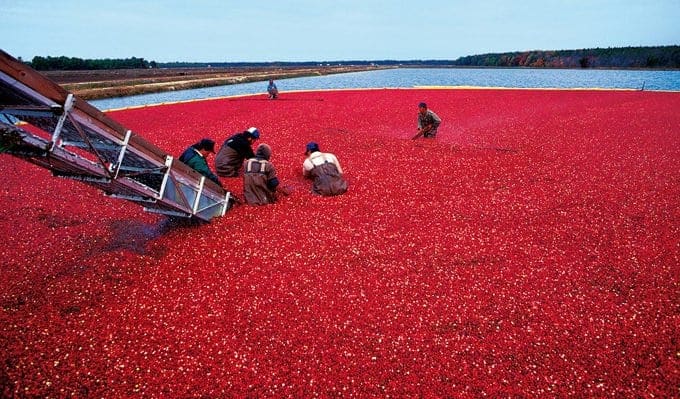
All about cranberries
On the sidelines were guys holding rakes, dressed in bibbed rubber overalls. One day I found out this isn’t how cranberries grow but how most of them are harvested.
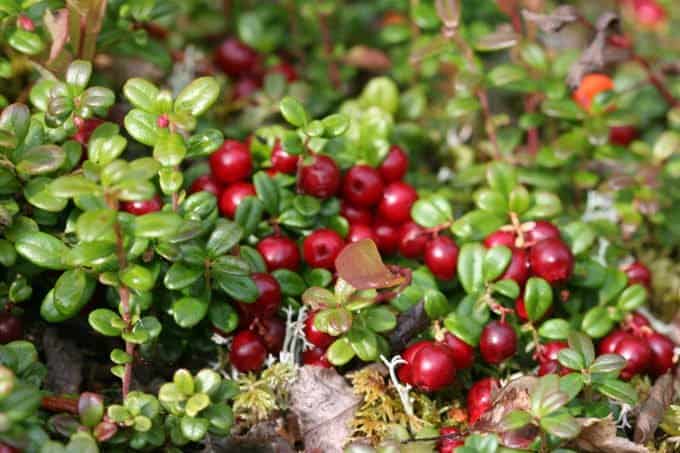
I learned the real deal, one beautiful September day, while boating in the Adirondacks with my dear friend Percy. She told me that she wanted to show me something. We pulled our rowboat up on some vacant, treeless sandy, little shelf of an island, and walked a few yards to an area of patchy, low lying green. Looking closer, to my delight, I saw cranberries among the shrubby vines.
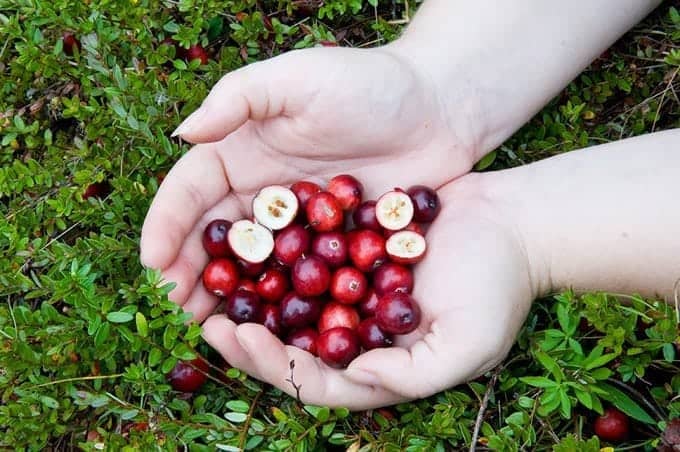
At 2 or 3 inches high at best, we started to pick them on our hands and knees. These wild cranberries were smaller and a lighter color then the store bought, but tasted exactly the same to me. That day we picked enough fruit to make a cranberry relish, and a compote. What a fun day and a great memory!
Cranberries are one of the few fruits that are native to North America. Relatives to cranberries are the blueberry, huckleberry, and lingonberry. Native Americans were harvesting cranberries over 12,000 years ago.

Cranberries were (and still are) used for food, medicines and making dyes. They were named cranberries by early settlers, as a result of the appearance to their flower bud, which has backward twisted petals of light pink color, setting on the stem the flower resembles the bill, head and neck of a sandhill crane. They called them crane berries. Later the name was shortened to cranberries.
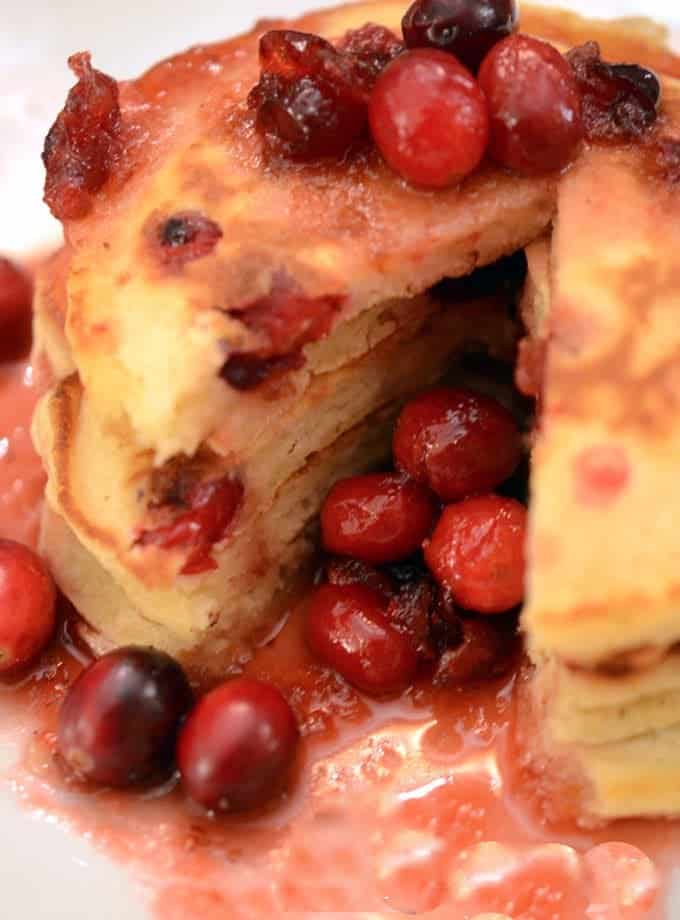
In the culinary sense, perhaps the most important use of the cranberry by the Native Americans was for pemmican, which was a type of preserved food. Pemmican was made from mashed cranberries, chopped dried venison and melted fat. The pemmican was stored in animal skin pouches and was edible for months. The acid in the cranberry and the added fat acted as preservatives. Pemmican provided protein, vitamin C, antioxidants and energy. Long journeys could be made with a cache of this food which could actually be considered in modern day terms, the preamble to the “power bars” that we use today.
Homemade Pemmican
Medicinally, some of the uses of cranberries were as a poultice, made by crushing the berry to a pulp, for application to infections and wounds.
Cranberry Relish Recipe
Cranberries were also considered a blood purifier, help for stomach cramps, a fever reducer, laxative and even used to help during the birthing process. Cranberry leaves were used for tea, fresh berries eaten raw or dried and formed into patties and stored for use over winter months.
Benefits of cranberries
- Cranberries enhance weight loss. They emulsify fat deposits in your body and their fiber helps to promote satiety.
- They boost immunity. Cranberries are rich in anti-oxidants.
- Cranberries may help prevent cancer. They contain cancer-fighting agents such as proanthocyanidin and flavonoids.
- They help fight tooth decay.
- Cranberries help fight urinary tract infections.
- Cranberries are delicious!
Cranberries were first commercially cultivated around 1816 on Cape Cod. Today, farmers grow cranberries in beds, located on bogs or marshes (they love the acidic soil available to them there) topped with well-drained soil or sand. At harvest time these beds are flooded after the berries have been mechanically raked. The cranberry has a 4 chamber air pocket inside, allowing them to float. This is a huge aid in gathering.
Today we know that cranberries contain at least 5 highly titled phytonutrients that are noted for their antioxidant, anti-cancer, and anti-inflammatory properties. Antioxidants work by aiding in the prevention of harmful microorganisms (free radicals) attaching to our cells. This helps to prevent infection and disease. Cranberries are also considered, by many, to help fight types of influenza and even help lessen the symptoms of the common cold.
The caveat is, it’s the whole berry (the body and the skin left after pressing) that really counts for providing the phytonutrients. The cranberry juice that we buy at the store, is usually loaded with sugar. As a matter of fact, sweetened cranberry juice can have more sugar per ounce than regular soft drinks! It’s what’s left after the pressing of the juice that contains the bulk of phytonutrients found in cranberries.
Steel Cut Oats with Fresh Cranberries
More about cranberries
A ripe cranberry will bounce. Hence, cranberries are sometimes called Bounceberries. This is how the packaged berries that we buy in the store are graded. They actually are lightly bounced on a belt with walls, a number of times in processing. Those that don’t make it over the wall by bouncing are mechanically eliminated from the acceptable cranberries that will be packaged as fresh.
Where they are grown
Today, cranberries are the official state fruit of both Wisconsin and Massachusetts. Wisconsin leads the US in the business of cranberry production by providing over 50% of the market. Massachusetts, New Jersey, Oregon, and Washington follow, in that order. In production, cranberries are measured as “barrels”, which are 100 pounds of cranberries. It takes around 450 cranberries to make a pound. Believe it or not, only 5% of cranberries produced in the US are sold as fresh. The rest are pressed for juices, juice blends, canned sauces, and additions to other products.
Cranberry Swirl Cake Recipe by Platter Talk
Cranberries go well with oranges, chocolate or white chocolate, honey, maple syrup, sweet squash, and really only limited to what your taste buds allow. Anything sweet will help balance their astringency.
I’m planning on drying some myself, in an oven, to store for munching. Maybe I’ll make some cranberry leather.
I’d also like to make a compote using brandy, walnuts, and maple syrup. Cranberries added to pork or games is the bomb and even works for poultry as well. I love cranberries added to couscous and wild rice, or as a surprise of balance in a chocolate chip cookie, using white or semi-sweet. Cranberries are great with chopped walnuts or pecans. They love cinnamon and five-spice. Of course, vodka, peach schnapps, and pureed cranberries with a spritz of fresh lime are on the list too, sooner than later.
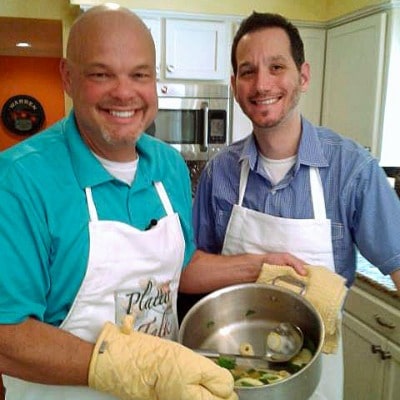











I would love to pick cranberries in the wild!! We actually have a place fairly close to us (about an hour) that does a festival every year! They are delicious little gems, great in a pie, scone or just on their own in a sauce.
Bounce berries! Who knew? Loved all your facts… I am going to impress my niece with my new trivia at Thanksgiving dinner.
this is amazing seriously so much I never knew I always knew about it being good for bladder infections but its so much more here. I love cranberries and buy fresh everyday how lucky to be able to pick them! great post
I love interesting cranberry recipes. I adore cranberries. I like to read this post very interesting information. The pictures look very appetizing.
I love this post! So much wonderful information! As a fellow Wisconsinite I know cranberries are heavily produced here, and I love learning more information- the pictures look delicious too!
Wow, what an awesome post! I learned so much! Considering how much I love cranberries, I’m amazed how little I knew about them. Now I seriously want to find some wild cranberries to pick!
Hey, picking the wild cranberries was lots of fun! I hope that you are able to fulfill your wishes, picking the wild cranberry someday.
What a great post on facts about cranberries! I love baking with them!
Hi Marsha. Thanks for reading the article. I’ve decided to try and eat more cranberry everything because they are so healthy!
Great informative post on cranberries! Love your recipes, especially the cranberry orange pancakes with that delicious cranberry infused maple syrup – can’t wait to make them. And now I’m craving cranberry compote with peach schnapps. Wonder how cranberries would pair with lemoncello?
Hmmm. I bet the answer would be yes! Thanks for your comment and reading the article. Those pancakes ARE pretty darn good…
This is very useful, thank you! It’s a nice reminder to not take things for granted and for us to slow down and appreciate the wonderful food we get!
Yes, that is so true. Thanks for your comment.
What a fabulous post and I’ve learned so much about these festive berries. Thank you for sharing.
Very happy that you enjoyed the article!